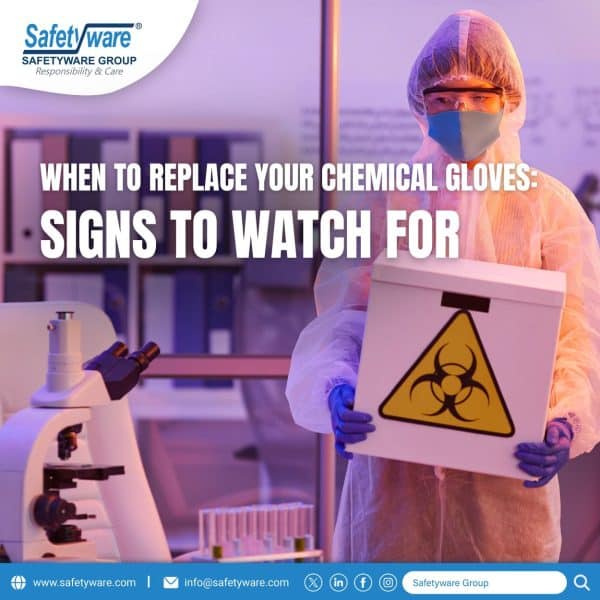Safety Knowledge
When to Replace Your Chemical Gloves: Signs to Watch For
Chemical gloves are essential personal protective equipment (PPE) used to protect workers from exposure to hazardous chemicals in various industries, including laboratories, manufacturing facilities, and healthcare settings. Over time, chemical gloves can degrade due to exposure to chemicals, wear and tear, or improper storage, compromising their effectiveness and putting workers at risk. In this blog post, we will discuss the importance of knowing when to replace your chemical gloves and highlight key signs to watch for to ensure optimal protection for workers handling hazardous substances.
The Importance of Properly Maintained Chemical Gloves:
Chemical gloves serve as a critical barrier between workers and harmful chemicals, preventing skin contact and potential health risks such as chemical burns, dermatitis, and absorption of toxic substances. Regular inspection and timely replacement of chemical gloves are essential to maintain their integrity and protective properties, safeguarding the well-being of workers and ensuring a safe working environment.
Signs That Indicate It’s Time to Replace Your Chemical Gloves:
- Visible Damage: Inspect your chemical gloves regularly for signs of visible damage, such as tears, punctures, cuts, or abrasions. Any visible damage compromises the integrity of the gloves and reduces their ability to provide adequate protection against chemical exposure. If you notice any visible damage, replace the gloves immediately.
- Chemical Permeation: Chemical permeation occurs when hazardous substances penetrate through the glove material, leading to potential exposure and health risks for the wearer. If you notice any signs of chemical permeation, such as discoloration, swelling, or softening of the glove material, it is crucial to replace the gloves to prevent exposure to harmful chemicals.
- Loss of Elasticity: Over time, chemical gloves may lose their elasticity and flexibility, making them less comfortable to wear and compromising their fit and seal around the hands. Loss of elasticity can affect the dexterity and tactile sensitivity of the wearer, increasing the risk of accidents or exposure to chemicals. Replace gloves that have lost their elasticity to ensure a secure and comfortable fit.
- Odor or Discoloration: Unusual odors or discoloration of chemical gloves may indicate degradation of the material due to exposure to chemicals or environmental factors. Strong odors or changes in color can be signs of chemical breakdown or contamination, rendering the gloves ineffective in providing adequate protection. If you notice any unusual odors or discoloration, replace the gloves promptly.
- Expiration Date: Some chemical gloves come with an expiration date or recommended shelf life, indicating the period of time during which the gloves are expected to provide optimal protection. It is important to adhere to the expiration date and replace gloves that have exceeded their shelf life to ensure reliable protection against chemical hazards.
- Frequent Use: Regular use of chemical gloves can lead to wear and tear over time, reducing their effectiveness in providing protection against chemical exposure. If you use chemical gloves frequently or in demanding work environments, consider replacing them more frequently to maintain their protective properties and ensure the safety of workers.
In conclusion, knowing when to replace your chemical gloves is crucial for maintaining a safe and healthy work environment for workers handling hazardous chemicals. By recognizing the signs of wear and tear, chemical permeation, loss of elasticity, odor, discoloration, expiration date, and frequent use, employers and workers can ensure that their PPE remains effective in protecting against chemical hazards. Regular inspection, proper maintenance, and timely replacement of chemical gloves are essential practices to uphold workplace safety standards and prevent occupational health risks associated with chemical exposure. Prioritizing the safety and well-being of workers by replacing chemical gloves when necessary is a proactive measure that contributes to a safer and healthier work environment.
explore more about Chemical Resistant Gloves

